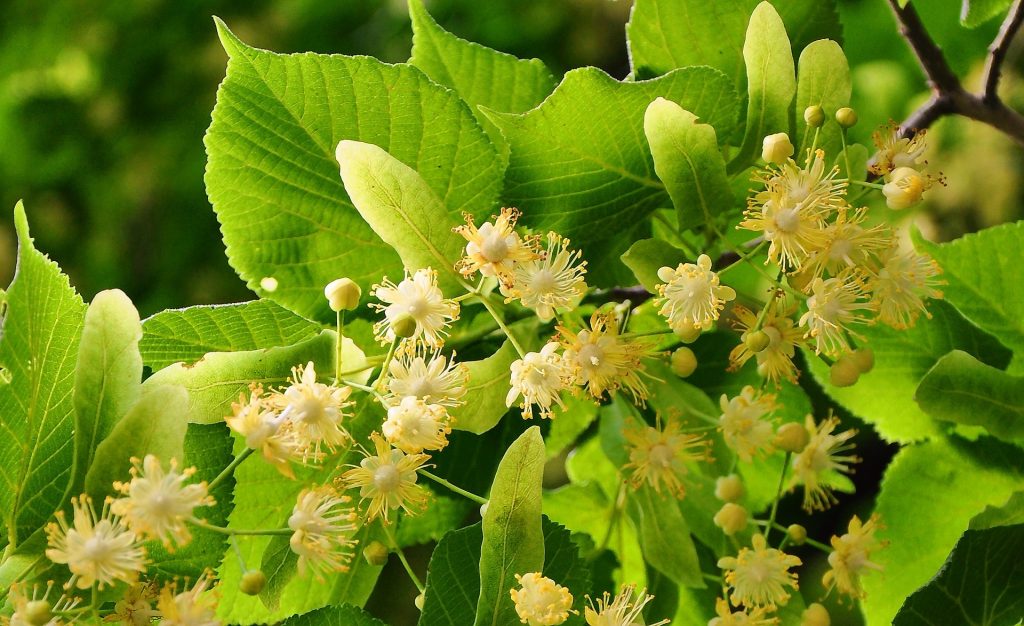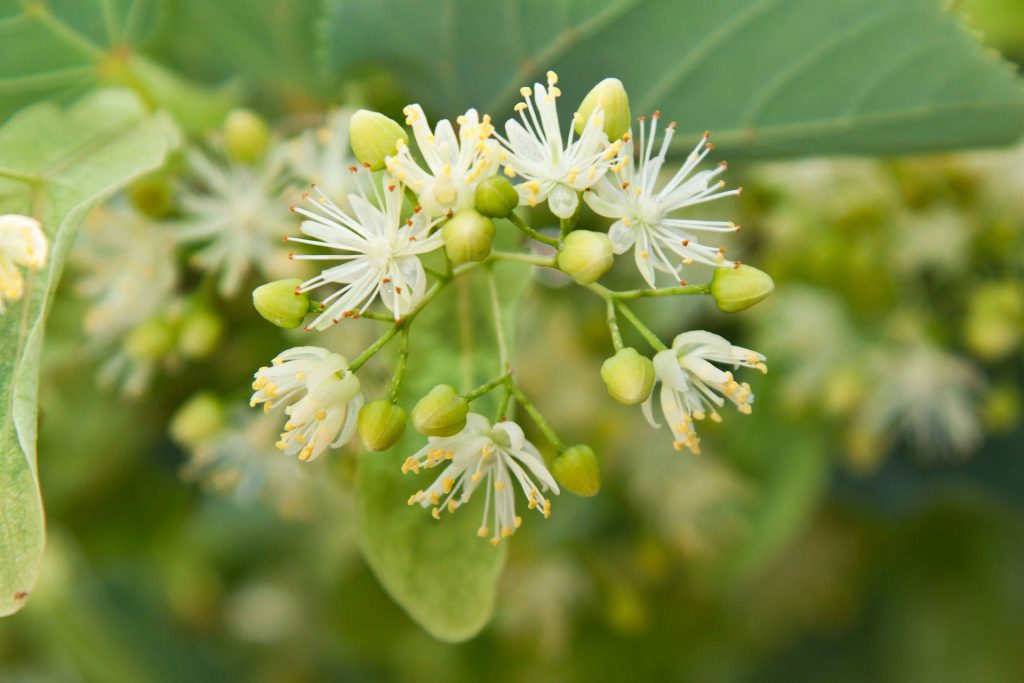Linden (Tilia spp) is a common English name for a genus of tree belonging to the Tiliaceae family of plants. Although the name derived from England, the trees are native to much of the temperate regions of the Northern Hemisphere. Other common names for the tree include lime trees and basswood. The trees can grow to just short of 50 meters in height, are deciduous, and have distinctive heart-shaped leaves. Linden produces a blossom of light yellow flowers, and it is this blossom that can be used medicinally for a number of purposes. Traditional medicine records the use of linden flowers as sedatives, tranquilizers, diuretics and in the treatment of upper respiratory tract infections. The sedative properties of the flowers are noted to occur at higher doses of flower extracts. As with hawthorne, linden appears to have the ability to reduce high blood pressure, and this duel cardioprotective and mild nervous system calming effect bears a striking similarity to the effects seen with hawthorn.

The medicinally important part of the linden tree is the blossom. From this blossom, extracts can be made and administered for their anxiolytic, sedative and cardioprotective effects.
A number of animal studies have been performed to assess the anxiolytic effects of linden. Mice exposed to stressful laboratory conditions demonstrate significant reductions in the anxiety they experience when administered linden flower extract. In this regard, the authors suggested that linden produces significant antistress activity. Evidence also suggest that Tilia species found in North and Central America (Tilia americana L. var. mexicana) possess similar anxiolytic and sedative properties to the more studies European species. Linden does contain vitamin K, and although vitamin K can have blood thinning properties, the levels are generally considered to be too low to have detrimental effects for example during pregnancy. Certainly evidence supports the use of linden flower extract in the treatment of mild to moderate anxiety or as a possible treatment for insomnia. As insomnia often accompanies depression, the use of linden as an adjunct to treatment for depressive symptoms may also be justified.

Comparisons have been made between fresh linden samples and those collected from stored samples provided through markets and shops. This analysis involved Mexican species of Tilia. Both fresh and stored extracts appear to demonstrate sedative and anxiolytic effects, and both types of samples had similar phytochemical profiles. These phytochemicals included the flavonoids quercetin and kaempferol. Studies have investigated the sedative and anxiolytic properties of kaempferol and quercetin on mice and compared the effects to both the benzodiazepine drug diazepam, and the anxiolytic drug buspirone. In this regard, both quercetin and kaempferol showed effects comparable to these drugs in terms of their sedative and anxiolytic properties. Quercetin and kaempferol belong to the flavonol group of flavonoids, suggesting that flavonols may possess significant anxiolytic effects in animals. Flavones, another group of flavonoids, have also been demonstrated to possess effects similar to anxiolytic drugs including the benzodiazepines.
Eat Well, Stay Healthy, Protect Yourself
RdB
